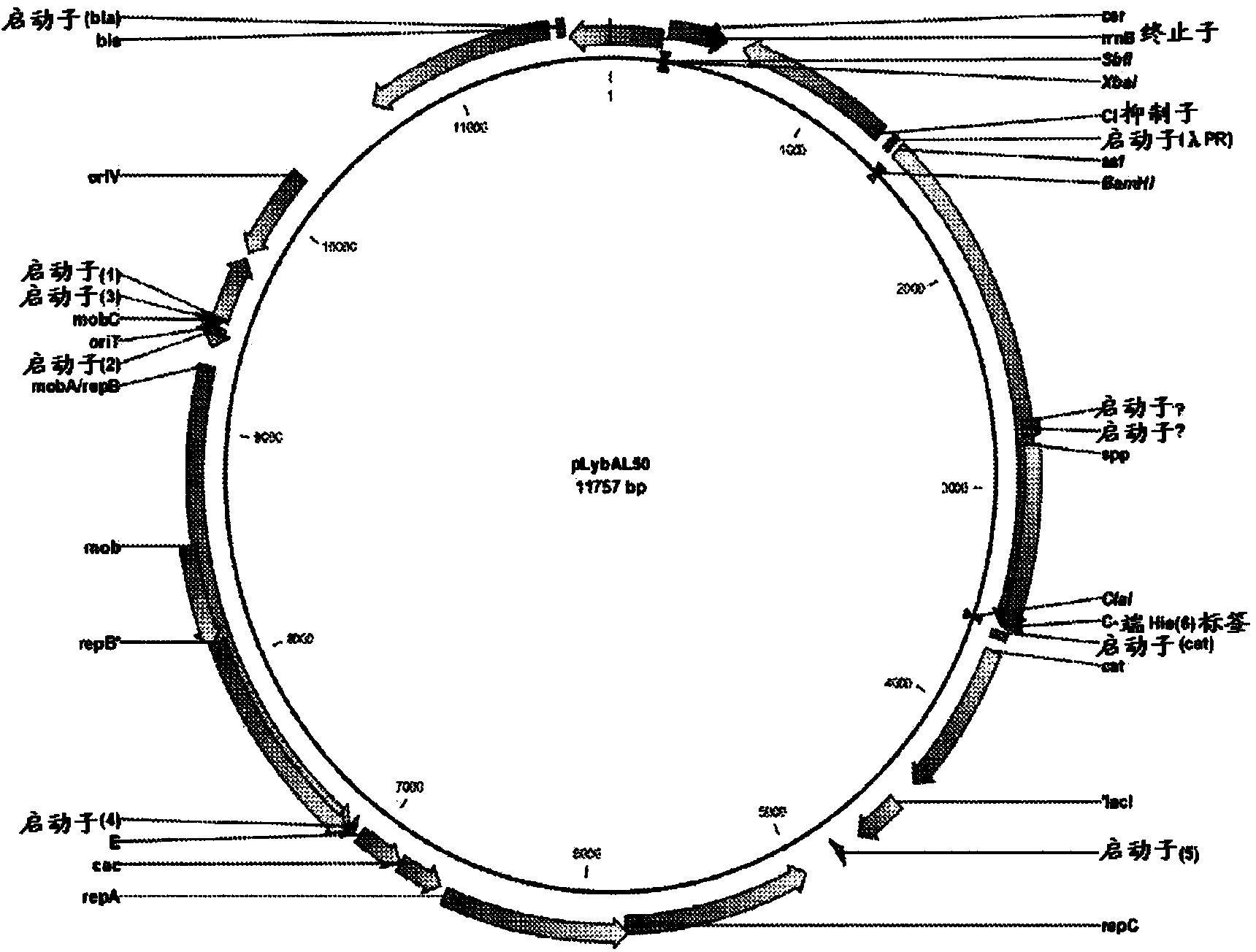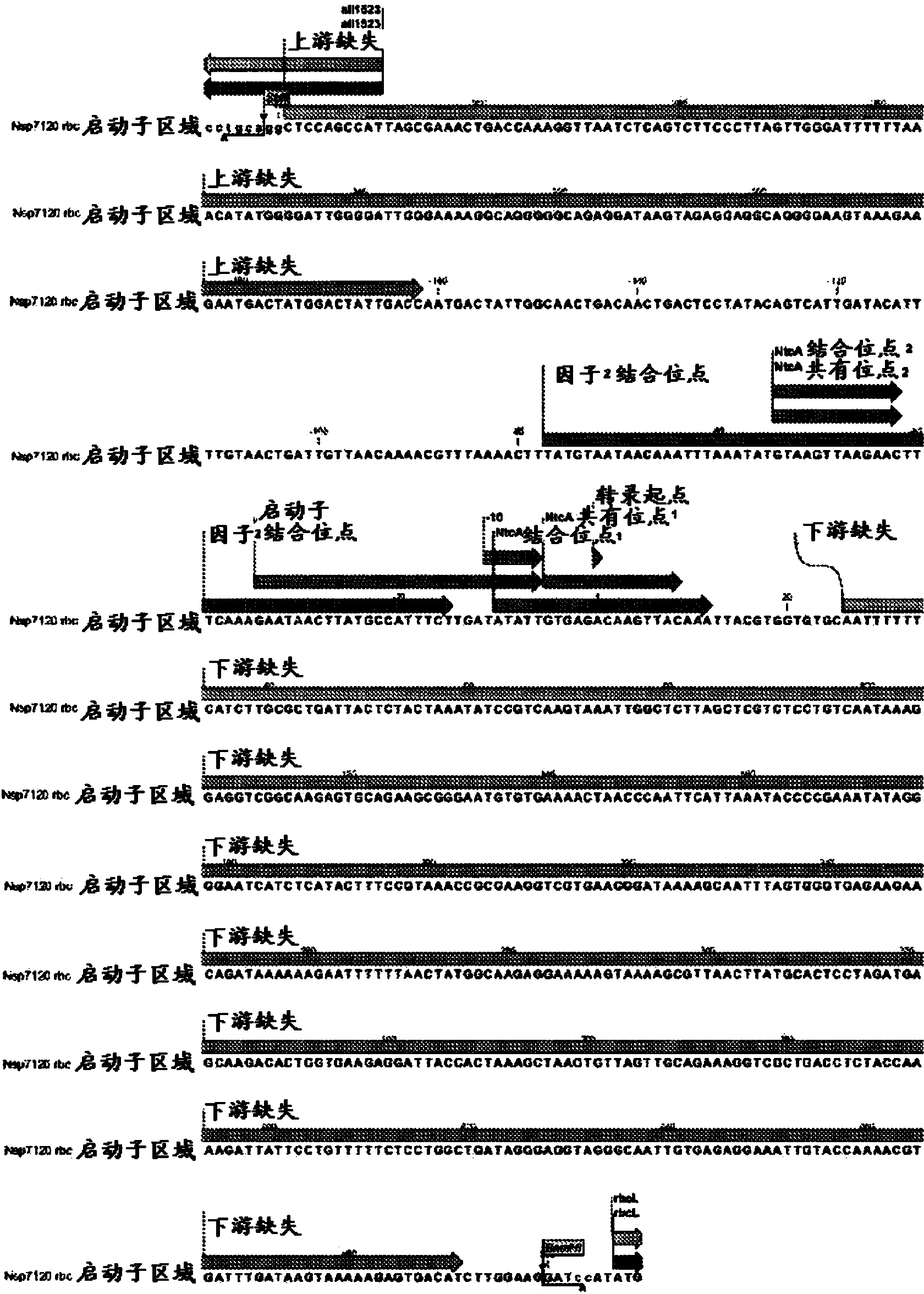Regulated gene expression systems and constructs thereof
An expression system and transcription factor technology, which can be used in the introduction of foreign genetic material, DNA/RNA fragments, recombinant DNA technology, etc. using vectors, which can solve problems such as limited costs
- Summary
- Abstract
- Description
- Claims
- Application Information
AI Technical Summary
Problems solved by technology
Method used
Image
Examples
Embodiment 1
[0148] Example 1: Removal of invertase activity from cells
[0149] To accumulate sucrose, Synechocystis sp. PCC6803 was engineered to remove invertase (β-fructofuranosidase) activity from the cell, which hydrolyzes sucrose into energy that would reenter the cell for normal metabolism. Glucose and fructose. LYB471 was obtained by deleting the gene lim17 (SEQ ID NO: 140) encoding invertase from ATCC27184 (LYB426). It also deletes LYB472 from the wild type line (LYB467). Over time, these lines diverged, resulting in a loss of motility in LYB426 (Kamei et al. 2001).
[0150]LYB443 was first generated by deleting the gene lim17 encoding invertase from LYB426 using a neomycin resistance marker. Using sequential PCR, a deletion was made in lim17 (SEQ ID NO: 140), leaving a large stretch of flanking DNA. A first PCR reaction was performed on the LYB426 whole cell genomic DNA template using Sspinvdel-F (SEQ ID NO: 142) and Sspinvdel-R (SEQ ID NO: 143) as primers. The product of t...
Embodiment 2
[0153] Example 2: Reduced expression of epipolysaccharide
[0154] Furthermore, it is known that Synechocystis sp. PCC6803 produces large amounts of exopolysaccharide (EPS) in response to normal aging of cultures or under environmental stress conditions on the cells (Panoff et al. 1988). The large amount of EPS represents a substantial carbon allocation and overall metabolic flux that can be diverted to sucrose production. Although EPS mutants have been selected, the genetics of the epipolysaccharide produced in Synechocystis sp. PCC6803 is relatively unknown (Panoff and Joset 1989). A large cluster of genes (almost 18 kbp in size) on the endogenous plasmid pSYSM has been postulated to be primarily responsible for EPS production based on their homology to known genes (Kaneko et al. 2003). To this end, putative genes considered responsible for key biosynthetic pathways related to EPS biosynthesis were removed from LYB472 to generate LYB476.
[0155] A similar strategy to dele...
Embodiment 3
[0157] Example 3: Expression of ASF by the nitrite reductase promoter
[0158] The following examples show ASF expression by the Synechocystis sp. PCC6803 or Synechococcus elongatus PCC7942 nitrite reductase promoters.
[0159] A strain of LYB476 (Synechocystis sp.), with a plasmid containing the nitrite reductase promoter from Synechococcus elongatus PCC7942 in front of the asf gene (pLybAL18), but with reduced EPS expression) was passed through 50 ml of 5 mM HEPES buffer The culture medium was adjusted to pH 8.0 in BG11 medium supplemented with 25 μg / ml chloramphenicol and 4 mM ammonium chloride instead of potassium nitrate as nitrogen source. (Plasmid pLybAL18 and its generation are described in U.S. Patent Application Publication No. 2009 / 0181434, which is incorporated herein by reference in its entirety. Plasmid pLybAL18 was introduced by triparental conjugation also as described in U.S. Patent Application Publication No. 2009 / 0181434 LYB476). Incubation was performed a...
PUM
| Property | Measurement | Unit |
|---|---|---|
| melting point | aaaaa | aaaaa |
Abstract
Description
Claims
Application Information
 Login to View More
Login to View More - R&D
- Intellectual Property
- Life Sciences
- Materials
- Tech Scout
- Unparalleled Data Quality
- Higher Quality Content
- 60% Fewer Hallucinations
Browse by: Latest US Patents, China's latest patents, Technical Efficacy Thesaurus, Application Domain, Technology Topic, Popular Technical Reports.
© 2025 PatSnap. All rights reserved.Legal|Privacy policy|Modern Slavery Act Transparency Statement|Sitemap|About US| Contact US: help@patsnap.com



